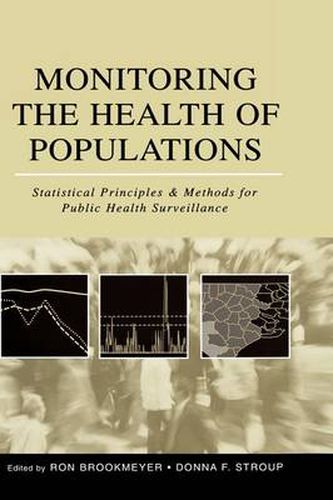Readings Newsletter
Become a Readings Member to make your shopping experience even easier.
Sign in or sign up for free!
You’re not far away from qualifying for FREE standard shipping within Australia
You’ve qualified for FREE standard shipping within Australia
The cart is loading…






Public health faces critical challenges ranging from outbreaks of new and old pathogens to the threat of bioterrorism and the impact of lifestyle and environmental changes on health. Modern tools of health surveillance and sound statistical practices are essential for meeting these challenges and providing accurate warnings about real public health threats without wasting resources on false alarms. Advances in statistical techniques, computing power and the Internet have led to many new approaches to monitoring population health, analyzing the data, and rapidly sharing it. This text explores the critical issues in the statistical analysis and interpretation of public health surveillance data. It covers statistical methods for detecting disease outbreaks and clusters, the use of survey methods, interpreting time trends and geographic patterns, exploratory statistical analysis of surveillance data, and web-based health reporting systems for the rapid detection of public health problems, among other topics. The methodological approaches are illustrated in discussions of several current public health issues, including the HIV/AIDS epidemic, anthrax, health effects of particulate air pollution, and trends in prostate cancer. The methods are broadly applicable to surveillance systems and registries for numerous health conditions, e.g. infectious diseases, chronic diseases, adverse drug reactions. The book provides numerous illustrations, worked examples, and practical information for actually implementing the methods. It will serve as a reference for public health practitioners and as a textbook for courses on disease surveillance taken by students of statistics biostatistics, epidemiology or public health.Readership: Graduate students of public health, epidemiology and biostatistics taking courses on disease surveillance
$9.00 standard shipping within Australia
FREE standard shipping within Australia for orders over $100.00
Express & International shipping calculated at checkout
Public health faces critical challenges ranging from outbreaks of new and old pathogens to the threat of bioterrorism and the impact of lifestyle and environmental changes on health. Modern tools of health surveillance and sound statistical practices are essential for meeting these challenges and providing accurate warnings about real public health threats without wasting resources on false alarms. Advances in statistical techniques, computing power and the Internet have led to many new approaches to monitoring population health, analyzing the data, and rapidly sharing it. This text explores the critical issues in the statistical analysis and interpretation of public health surveillance data. It covers statistical methods for detecting disease outbreaks and clusters, the use of survey methods, interpreting time trends and geographic patterns, exploratory statistical analysis of surveillance data, and web-based health reporting systems for the rapid detection of public health problems, among other topics. The methodological approaches are illustrated in discussions of several current public health issues, including the HIV/AIDS epidemic, anthrax, health effects of particulate air pollution, and trends in prostate cancer. The methods are broadly applicable to surveillance systems and registries for numerous health conditions, e.g. infectious diseases, chronic diseases, adverse drug reactions. The book provides numerous illustrations, worked examples, and practical information for actually implementing the methods. It will serve as a reference for public health practitioners and as a textbook for courses on disease surveillance taken by students of statistics biostatistics, epidemiology or public health.Readership: Graduate students of public health, epidemiology and biostatistics taking courses on disease surveillance